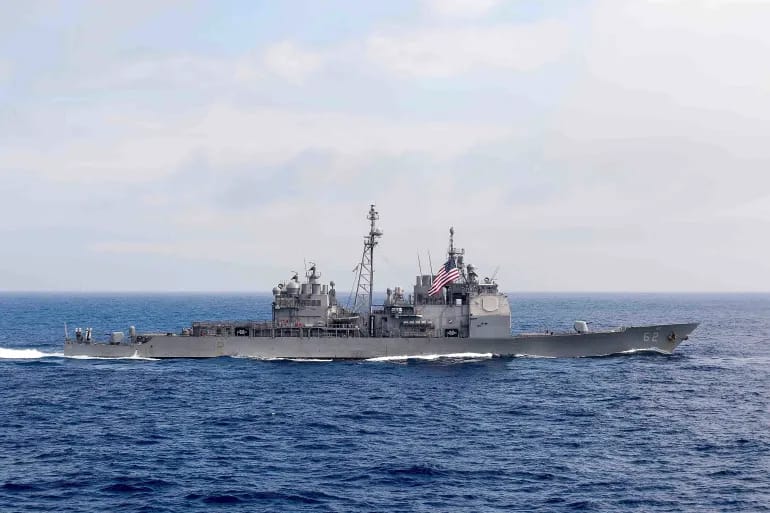In a striking move reflective of heightened global tensions, the United States has swiftly dispatched a quartet of naval warships following reports of a joint naval patrol by Russian and Chinese forces near the Alaskan coastline. The Wall Street Journal (WSJ) reveals that a total of 11 ships, a mix of Russian and Chinese vessels, ventured close to Alaska’s Aleutian Islands, an action that has stirred concerns and prompted an assertive US response.
Naval Convergence near Alaska’s Shores
The report by WSJ unveils a remarkable convergence of maritime forces as at least 11 Russian and Chinese ships approached the Aleutian Islands, situated in the northern expanse of the US state of Alaska. Although the ships refrained from entering US territorial waters, their proximity triggered alarm, leading to the prompt deployment of four US navy destroyers and P-8 Poseidon aircraft. This development marks a historical precedent, attracting commentary from experts like Brent Sadler, a senior research fellow at the Heritage Foundation and a retired navy captain.
Geo-Political Ripples and Provocations
The coordinated maneuver by Russia and China, occurring against the backdrop of the ongoing conflict in Ukraine and escalating tensions surrounding Taiwan, has stirred widespread apprehension. Experts underscore the provocative nature of this action, given the geopolitical context. Sadler, among others, deems the naval convergence “highly provocative,” suggesting that it adds fuel to the already fiery global landscape.
Political Response and Diplomatic Insights
Officials from the US Northern Command have officially confirmed the operation, clarifying that it was executed within international waters and did not pose a direct threat. Republican Senators Dan Sullivan and Lisa Murkowski, representing Alaska, emphasized the regional significance of the event. In a joint statement, they expressed that this occurrence serves as a stark reminder of Alaska’s geographical proximity to both China and Russia, highlighting the state’s crucial role in national defense and territorial sovereignty.
Diplomatic Narratives and Historical Precedence
Counteracting speculations of antagonism, the Chinese embassy in Washington, DC presented an alternate narrative. A spokesperson from the embassy cited an annual cooperation plan between the Chinese and Russian militaries as the basis for the joint patrol. According to this perspective, the naval exercise was not targeted at any third party and bore no relation to the ongoing international and regional dynamics.
Persistent Trends and Past Instances
This incident is not the first of its kind. Senators Sullivan and Murkowski recounted a similar event in 2022, revealing that last summer, both Chinese and Russian navies embarked on a comparable joint operation off Alaska’s coast. This history includes past encounters as well. In 2021, US Coast Guard cutters reported an encounter with Chinese vessels in the Bering Sea and North Pacific Ocean, while the first recorded instance of Chinese navy ships sailing in international waters in the Bering Sea dates back to 2015.
The convergence of these recent events, amid the backdrop of simmering international disputes, evokes complex questions about the motives and implications of such joint naval patrols. As nations navigate the tumultuous waters of global politics, the United States’ swift naval response serves as a clear assertion of its commitment to safeguarding its interests and protecting its territorial integrity.















